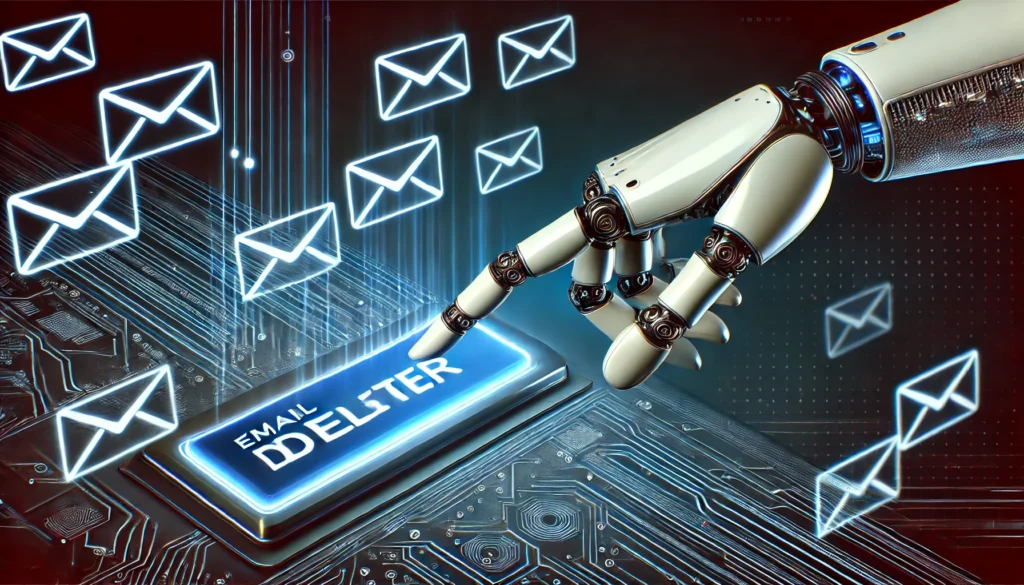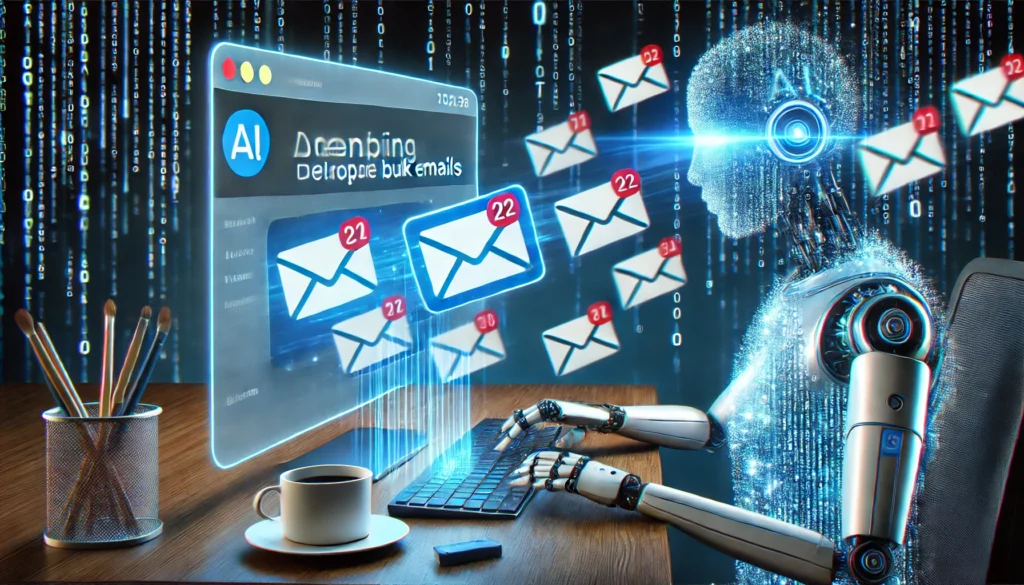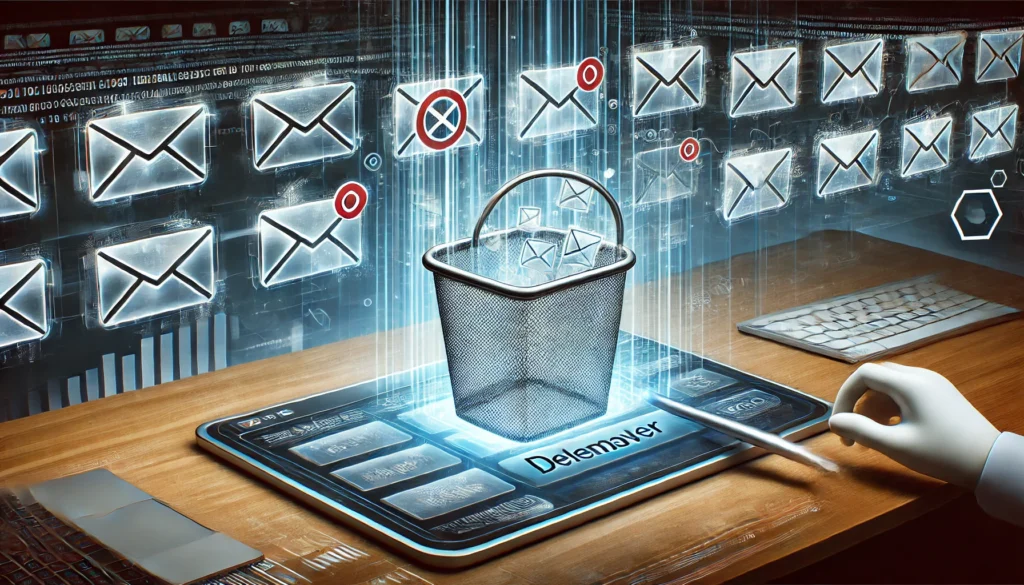Managing an overflowing inbox can be a daunting task, especially when it is cluttered with bulk emails that you neither read nor need. Whether you’re a health and wellness coach looking for the latest research updates or a science journalist seeking to streamline your correspondence, unsubscribing from unnecessary emails can significantly enhance your productivity and focus. In this guide, we delve into effective strategies and hacks to help you unsubscribe from bulk emails, primarily using Gmail, a widely preferred email service.
You may also like: Top Email Deleters for Inbox Management
Understanding the Need to Unsubscribe
The Impact of Email Overload
Emails have revolutionized communication, but the influx of promotional, social, and spam emails can overwhelm even the most organized individuals. According to recent studies, the average person receives over 100 emails a day, a significant portion of which are bulk emails. This overload not only consumes time but also affects mental clarity and focus, which are crucial for professionals like health and wellness coaches, science journalists, and biohackers.
Time Consumption
The sheer volume of emails can eat into your day, leaving less time for meaningful tasks. Sorting through unnecessary emails can be time-consuming, detracting from more important responsibilities.
Mental Clarity and Focus
An overflowing inbox can create a cluttered digital environment, which can translate to a cluttered mind. This constant barrage of information can lead to decision fatigue, making it harder to focus on critical tasks.
Professional Efficiency
For professionals, the ability to quickly access and respond to important emails is vital. A cluttered inbox can lead to missed opportunities and hindered communication, affecting overall professional efficiency.
Benefits of a Clean Inbox
Reducing clutter by unsubscribing from unnecessary emails leads to several benefits:
- Increased Productivity: A streamlined inbox allows you to focus on critical emails and tasks.
- Improved Mental Clarity: Less clutter means fewer distractions, enabling better concentration.
- Enhanced Security: Unsubscribing from untrusted sources reduces the risk of phishing attacks and malware.
Increased Productivity
A clean inbox allows you to prioritize important tasks without the distraction of irrelevant emails. This improved focus can significantly boost your productivity, allowing you to achieve more in less time.
Improved Mental Clarity
With fewer emails vying for your attention, you can maintain better mental clarity. This helps in making more informed decisions and staying on top of your responsibilities without feeling overwhelmed.
Enhanced Security
By unsubscribing from untrusted sources, you reduce the risk of phishing attacks and malware. This proactive measure helps protect your personal information and keeps your digital environment secure.
Effective Ways to Unsubscribe from Bulk Emails
Manual Unsubscribe Methods
Manually unsubscribing from emails can be time-consuming but effective. This approach allows you to selectively remove yourself from mailing lists, ensuring you only receive emails that are relevant to you.
Identifying Unnecessary Emails
The first step in manual unsubscribing is identifying which emails are unnecessary. This involves reviewing your inbox and marking emails that provide no value to your personal or professional life.

Taking Action
Once you’ve identified unnecessary emails, take action by opening each email and following the unsubscribe process. This might involve clicking a link or sending a request to the sender.
Monitoring Results
After unsubscribing, monitor your inbox to ensure these emails no longer appear. If they persist, consider additional steps such as contacting the sender directly or reporting them as spam.
Using the Built-in Gmail Unsubscribe Feature
Gmail provides a straightforward way to unsubscribe from unwanted emails:
- Open the email you wish to unsubscribe from.
- Look for the “Unsubscribe” link next to the sender’s email address at the top of the message.
- Click the link and follow the prompts to remove yourself from the mailing list.
Navigating Gmail’s Interface
Gmail’s interface is user-friendly, making it easy to locate the unsubscribe option. Familiarize yourself with the layout to quickly find the necessary links and buttons.
Ensuring Successful Unsubscription
After clicking the unsubscribe link, ensure the process is successful by reading any confirmation messages. Some services may require additional steps, such as verifying your email address.
Reassessing Email Preferences
Gmail’s unsubscribe feature not only helps remove bulk emails but also encourages you to reassess your email preferences. This can lead to a more personalized and efficient inbox experience.
Directly from the Email Footer
Most legitimate bulk emails include an unsubscribe link at the bottom of the message. By clicking this link and confirming your decision, you can effectively remove yourself from their list.
Locating the Unsubscribe Link
Typically found in the email footer, the unsubscribe link is often small and easy to overlook. Pay close attention to the fine print at the bottom of emails to locate this option.

Understanding the Process
Clicking the unsubscribe link usually redirects you to a confirmation page. Follow any additional instructions to complete the process, ensuring you’re fully removed from the mailing list.
Dealing with Persistent Senders
If you continue to receive emails after unsubscribing, consider contacting the sender directly or using Gmail’s reporting tools to block them. This helps maintain a clutter-free inbox.
Automated Tools and Extensions
Automated tools and extensions can simplify the process of managing bulk emails. These tools often provide a more efficient and comprehensive approach to cleaning up your inbox.
Exploring Available Tools
There are numerous automated tools available, each offering unique features. Research and compare options to find a tool that best suits your needs, considering factors such as ease of use and effectiveness.
Integrating Tools with Gmail
Once you’ve selected a tool, integrate it with your Gmail account. This typically involves granting access and setting preferences to allow the tool to scan and manage your emails.
Monitoring and Adjusting Settings
Regularly monitor the tool’s performance to ensure it’s effectively managing your emails. Adjust settings as necessary to optimize its functionality and keep your inbox organized.
Gmail Auto Unsubscribe and Unroll.Me
For those seeking a more automated approach, tools like Unroll.Me can be invaluable. This free service scans your inbox for subscription emails and allows you to unsubscribe with a single click. Here’s how to use it:
- Visit Unroll.Me and sign in with your Gmail account.
- Allow the service to access your email subscriptions.
- Unsubscribe from unwanted emails with just a click.
Setting Up Unroll.Me
Setting up Unroll.Me is straightforward. After signing in, the tool scans your inbox and identifies all subscription emails, presenting them in an easy-to-manage list.
Unsubscribing with Ease
With Unroll.Me, unsubscribing is as simple as clicking a button. This streamlined process saves time and effort, allowing you to manage your inbox efficiently.
Reviewing and Managing Subscriptions
Unroll.Me also offers features for reviewing and managing subscriptions, such as consolidating emails into a daily digest. This helps further reduce inbox clutter and improve email management.
Gmail Unsubscribe Hacks
Gmail offers various hacks that can help manage bulk emails more effectively. These hacks range from using filters to organizing emails with labels, providing additional layers of inbox management.
Creating Custom Filters
Custom filters can automatically manage incoming emails based on specific criteria. By setting up filters, you can ensure emails are categorized or deleted without manual intervention

Utilizing Priority Inbox
Gmail’s Priority Inbox feature automatically categorizes emails based on importance. This helps prioritize critical messages, reducing the time spent sorting through bulk emails.
Leveraging Smart Compose
Smart Compose suggests responses and helps draft emails quickly. This feature can save time when dealing with bulk emails, allowing you to focus on more important tasks.
Gmail Filters for Automatic Deletion
Filters can be a powerful tool in Gmail for managing bulk emails without manually unsubscribing. Here’s a step-by-step guide:
- Click the gear icon in Gmail and select “See all settings.”
- Navigate to the “Filters and Blocked Addresses” tab and click “Create a new filter.”
- Enter keywords or email addresses you want to filter out.
- Choose “Delete it” as the action to automatically remove such emails.
Identifying Filter Criteria
To create effective filters, identify common keywords or email addresses associated with bulk emails. This might include specific phrases, domains, or senders.
Setting Up and Testing Filters
After setting up filters, test them to ensure they’re capturing the right emails. Adjust the criteria as necessary to improve accuracy and prevent important emails from being filtered out.
Monitoring Filter Performance
Regularly review your filters to ensure they’re working as intended. Update them as needed to adapt to changes in your email habits or new sources of bulk emails.
Using Gmail Labels for Organization
While not directly unsubscribing, organizing emails with labels can help manage bulk emails effectively:
- Create labels for different categories of emails.
- Set up filters to automatically label incoming emails.
- Periodically review and unsubscribe from emails under these labels as needed.
Designing an Effective Labeling System
Develop a labeling system that categorizes emails in a way that makes sense to you. This might involve creating labels based on sender, content type, or urgency.
Automating Label Assignment
Use filters to automatically assign labels to incoming emails. This reduces the need for manual sorting and helps maintain an organized inbox.
Periodic Review and Maintenance
Regularly review your labeled emails to identify any that are no longer relevant. This proactive approach helps keep your inbox clean and ensures you’re only receiving valuable content.
Best Practices for Long-term Email Management
Regularly Reviewing Subscriptions
Periodically assess your email subscriptions to ensure they align with your current interests and needs. This proactive approach prevents your inbox from becoming cluttered over time.
Scheduling Routine Reviews
Set a regular schedule to review your email subscriptions. This might be monthly or quarterly, depending on your volume of incoming emails.
Evaluating Subscription Value
During reviews, evaluate the value each subscription provides. Consider whether the content is relevant, informative, and aligns with your current interests or professional needs.
Taking Action on Redundant Subscriptions
If a subscription is deemed redundant, take immediate action to unsubscribe. This helps maintain an efficient inbox and ensures you’re only receiving valuable information.
Embracing Minimalism in Email Management
Adopting a minimalist approach to email management involves being selective about the emails you subscribe to. Prioritize quality over quantity, and only subscribe to emails that provide genuine value.
Defining Your Email Priorities
Determine what types of emails are most important to you, whether they are work-related, personal, or informational. This clarity helps guide your subscription choices.
Implementing Selective Subscription Practices
Be selective when subscribing to new emails. Consider their potential impact on your inbox and only subscribe if they align with your defined priorities.
Maintaining a Minimalist Mindset
Continuously apply a minimalist mindset to your email management. Regularly assess and refine your subscriptions to ensure your inbox remains focused and efficient.
Exploring Future Trends in Email Management
With advancements in artificial intelligence and machine learning, the future holds promising solutions for email management. Tools that automatically categorize and prioritize emails based on your behavior and preferences are on the horizon, offering even more efficient ways to maintain a clutter-free inbox.
AI-Powered Email Solutions
AI technology is increasingly being integrated into email management tools. These solutions can analyze your behavior and preferences to optimize inbox organization and prioritize important emails.
Machine Learning for Personalized Management
Machine learning algorithms can learn from your email habits to provide more personalized management options. This includes suggesting unsubscribing from emails you frequently ignore or categorizing emails based on your interaction patterns.
The Future of Seamless Email Experiences
As technology evolves, the future promises more seamless email experiences. This includes fully integrated systems that manage your emails with minimal input, allowing you to focus on more critical tasks.
Conclusion
Unsubscribing from bulk emails is not merely about decluttering your inbox; it’s about reclaiming your time and mental bandwidth. By leveraging manual methods, automated tools, and Gmail hacks, you can effectively manage your email subscriptions and enhance your productivity. As professionals in health and wellness, science journalism, or biohacking, maintaining a clean inbox is integral to staying focused on your goals and optimizing your work efficiency. Embrace these strategies today and experience the benefits of a streamlined digital environment.
Further Reading:
How to Mass Unsubscribe From Gmail Emails
Is There a Way to Mass Unsubscribe From Emails?
Bulk Unsubscribe Made Easy in Gmail
Important Note: The information contained in this article is for general informational purposes only, and should not be construed as health or medical advice, nor is it intended to diagnose, prevent, treat, or cure any disease or health condition. Before embarking on any diet, fitness regimen, or program of nutritional supplementation, it is advisable to consult your healthcare professional in order to determine its safety and probable efficacy in terms of your individual state of health.
Regarding Nutritional Supplements Or Other Non-Prescription Health Products: If any nutritional supplements or other non-prescription health products are mentioned in the foregoing article, any claims or statements made about them have not been evaluated by the U.S. Food and Drug Administration, and such nutritional supplements or other health products are not intended to diagnose, treat, cure, or prevent any disease.


